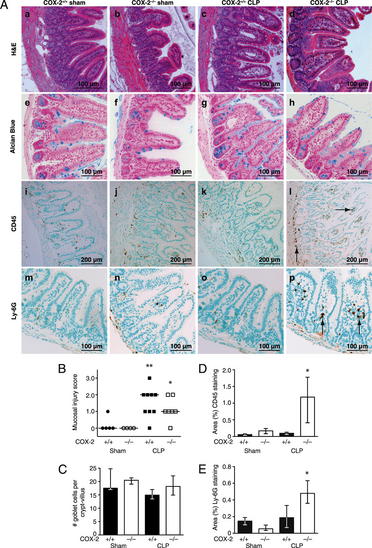Critical Care Medicine
Adult Critical Care
Cyclooxygenase-2 Deficiency Leads to Intestinal Barrier Dysfunction and Increased Mortality during Polymicrobial Sepsis
Fredenburgh LE, Velandia MMS, Ma J, et al (Brigham and Women’s Hosp, Boston, MA; et al) J Immunol 187:5255-5267, 2011§
Evidence Ranking
• B
Expert Rating
• 2
Abstract
Sepsis remains the leading cause of death in critically ill patients, despite modern advances in critical care. Intestinal barrier dysfunction may lead to secondary bacterial translocation and the development of the multiple organ dysfunction syndrome during sepsis. Cyclooxygenase (COX)-2 is highly upregulated in the intestine during sepsis, and we hypothesized that it may be critical in the maintenance of intestinal epithelial barrier function during peritonitis-induced polymicrobial sepsis. COX-2−/− and COX-2+/+ BALB/c mice underwent cecal ligation and puncture (CLP) or sham surgery. Mice chimeric for COX-2 were derived by bone marrow transplantation and underwent CLP. C2BBe1 cells, an intestinal epithelial cell line, were treated with the COX-2 inhibitor NS-398, PGD2, or vehicle and stimulated with cytokines. COX-2−/− mice developed exaggerated bacteremia and increased mortality compared with COX-2+/+ mice following CLP. Mice chimeric for COX-2 exhibited the recipient phenotype, suggesting that epithelial COX-2 expression in the ileum attenuates bacteremia following CLP. Absence of COX-2 significantly increased epithelial permeability of the ileum and reduced expression of the tight junction proteins zonula occludens-1, occludin, and claudin-1 in the ileum following CLP. Furthermore, PGD2 attenuated cytokine-induced hyperpermeability and zonula occludens-1 downregulation in NS-398–treated C2BBe1 cells. Our findings reveal that absence of COX-2 is associated with enhanced intestinal epithelial permeability and leads to exaggerated bacterial translocation and increased mortality during peritonitis-induced sepsis. Taken together, our results suggest that epithelial expression of COX-2 in the ileum is a critical modulator of tight junction protein expression and intestinal barrier function during sepsis (Fig 3).

Full access? Get Clinical Tree





